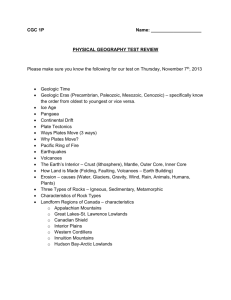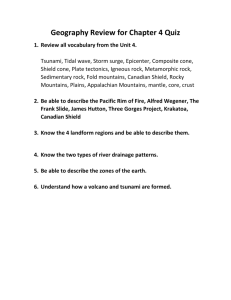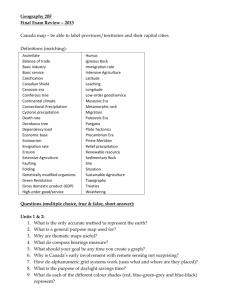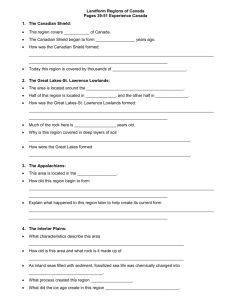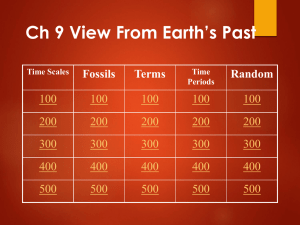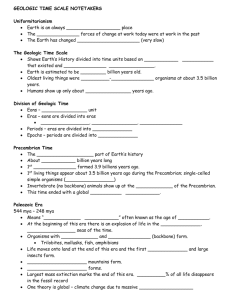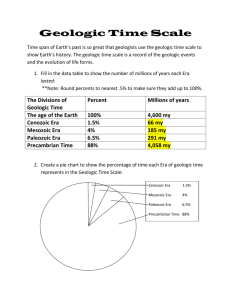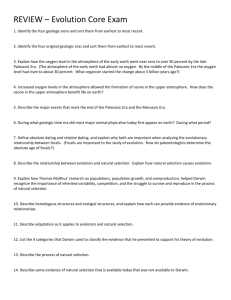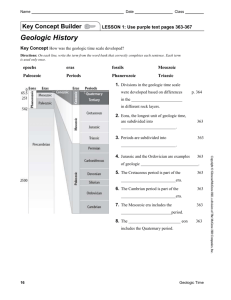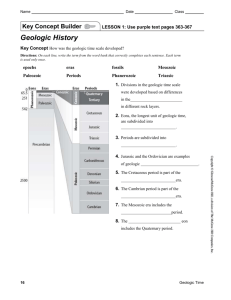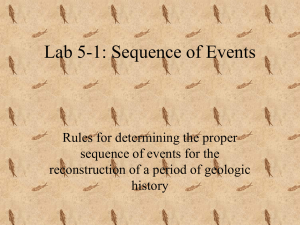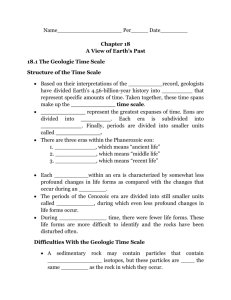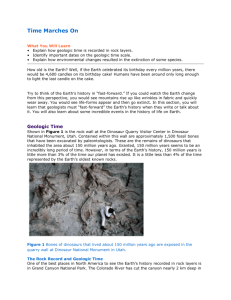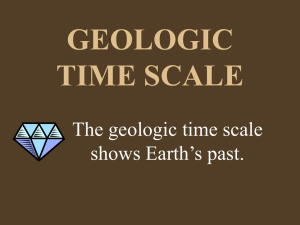Geologic History
advertisement
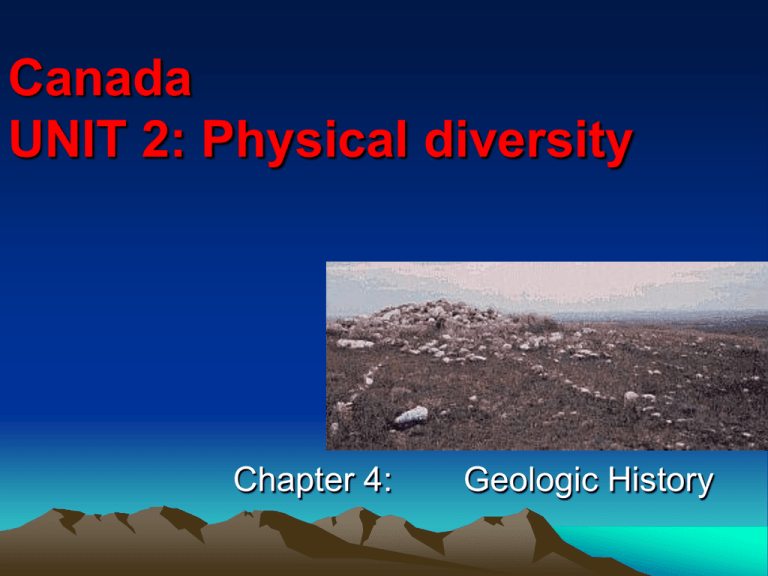
Canada UNIT 2: Physical diversity Chapter 4: Geologic History Geological History • Our physical appearance has changed over time. • Land is being built up. HOW? • Volcanoes • Moving plates • Deposition • Land being worn away. HOW? (Erosion) • Rain, rivers and oceans • Wind • Glaciers Ex. Ancient seas have disappeared. Mountains that were once high are now worn flat. Pages 26-27 Geologic History • Many years ago Canada’s landscape looked very different from how it looks today. • Two forces have mainly changed the physical landscape. – Erosion and Mountain building. • One being stronger than the other…. Q. How have things changed over time? Geologic History Geologic time: history of how the earth has changed from its formation to the present. • Earth is approx. 4.6 billion years old. • Earth’s geologic history can be divided into 4 eras (time periods). – Cenozoic – Mesozoic – Paleozoic – Precambrian Geologic History • Each era represents a time of major sediment deposition and earth movement. • In other words, significant building up, wearing down and movement of the land. Precambrian Era – Refers to “earliest life” and is the oldest!!! – 4.6 billion to 600 million years ago. – Lasted over 4 billion years. – Many cycles of building and wearing down (EROSION). – Our continent and in particular, the Canadian Shield was formed during this era. – Primitive life forms such as single-celled plants and animals. – Pages 28 - 29 The Canadian Shield Paleozoic Era • refers to “ancient life” • 600 to 225 million years ago (lasted 375 million years). • More mountain building, but lots of erosion of the Canadian Shield as well. • Erosion produced sediments which are small particle of rock that have been worn down. • These sediments were moved about by rivers and deposited elsewhere. Paleozoic Era • Layers of sediments were compressed together to form sedimentary rock. • They have become the bedrock (underlying solid rock beneath the layer of soil) in every province. • Appalachian mountains in Eastern Canada formed (p. 30) when these layers of sedimentary rock were forced UPWARDS.↑ The Appalachians Formation of the Appalachians Mesozoic • Refers to the “Middle life.” • 225 to 70 million years ago • Innuitian mountains formed when eastern Arctic “FOLDED” • Rocky Mountains in Western Canada started to form (at the end). Mesozoic – Formation of fuel deposits (page 31-top) • Warm climate • = • swamps and forests • = • Dead trees & Vegetation • = • Swamps, sand & silt • = • Compressed layers • = • Coal, oil and gas deposits formed Cenozoic • Refers to “recent life.” • 70 million years ago to now (has not ended). • More mountain building through folding, volcanoes and faulting. • Glaciers were the most significant force in shaping the land during this era and especially Canada as we know it today!! • They eroded and rounded the Canadian Shield and Appalachian Mountains. Cenozoic • Once melted, they deposited the eroded material to create the lowlands surrounding the Canadian Shield. • Some are still present today in Canada. • Age of mammals (including humans!) • Great Lakes - St. Lawrence Lowlands • Hudson Bay - Arctic Lowlands • Interior Plains Questions - Review Page 32 • #1 = ( 1 Pt) • #2a = (2 Pts) • #2b = ( 3 Pts) • #3a = ( 1 Pt) • #4a = ( 1 Pt) • #4b = ( 1 Pt) • #4c = ( 1 Pt) • #4d = ( 1 Pt) • • • • • • • • Page 32 #5b = ( 1 Pt) #6a = ( 1 Pt) #6b = ( 1 Pt) #7a = ( 1 Pt) #7b = ( 1 Pt) #7c = ( 1 Pt) #7d = ( 1 Pt)



